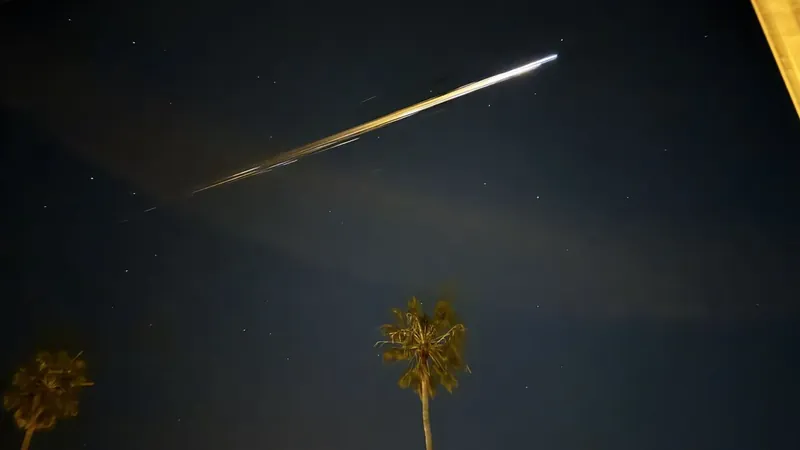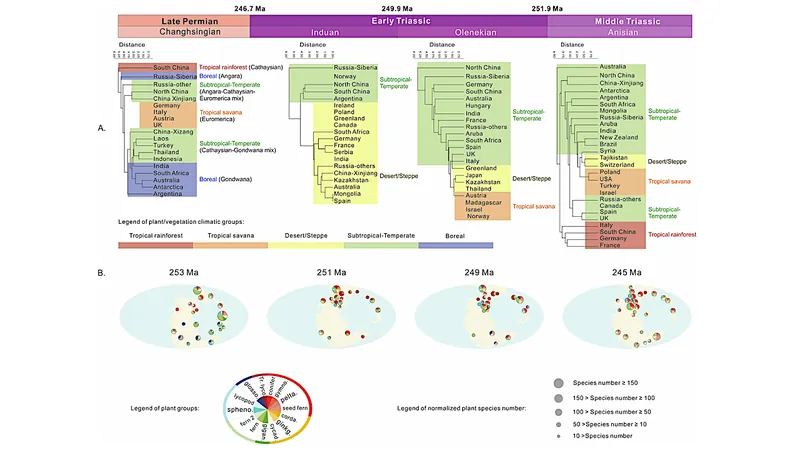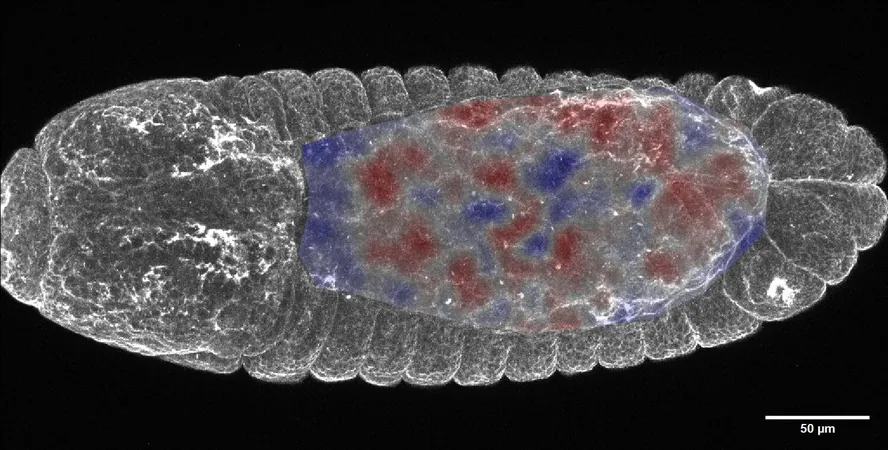
Spectacular Fireballs Ignite Los Angeles Sky: Can Seismology Track Space Junk?
2025-01-01
Author: Arjun
Spectacular Fireballs Ignite Los Angeles Sky
On April 2, a celestial spectacle unfolded as fireballs streaked across the night sky over Los Angeles and much of Southern California. Spectators gasped, speculating wildly—were they witnessing meteors, a botched rocket launch, or perhaps even an extraterrestrial visit?
As the dust settled, astronomers revealed that the fiery display was caused by space debris from the Chinese spacecraft Shenzhou-15, which had been launched in November 2022. The uncontrolled reentry of this module triggered international outcry concerning the increasing dangers posed by space junk—a pressing concern in our era of booming space exploration. However, what was initially a cause for alarm also led to an innovative approach by seismologists to monitor the path of such debris through our atmosphere.
As the spacecraft descended, sonic booms resonated throughout the Los Angeles basin, capturing the attention of seismic networks. A groundbreaking team of scientists meticulously analyzed seismic data to reconstruct the spacecraft's trajectory, providing a fresh perspective on tracking space debris—especially beneficial in regions lacking visual monitoring resources.
Lead author Benjamin Fernando of Johns Hopkins University expressed his excitement over this novel application of seismic measurements. "This marks a significant moment in tracking space debris. The utilization of seismic data provides us with a new tool for monitoring objects reentering the Earth’s atmosphere, especially when visibility is limited," he noted.
The Growing Menace of Space Junk
As our planet welcomes an increasing number of space missions—ranging from satellite launches to scientific probes—the risk associated with space debris is becoming more prominent. Fernando explained, "More missions mean more debris. As these objects deorbit, they pose a credible threat to lives and property on the ground."
Fernando's interest in the April incident deepened when he learned that residents had audibly experienced the reentry event. This prompted him to delve deeper—if humans could hear it, surely sensitive seismometers would capture the vibrations.
Through the analysis of seismic data from various stations in the area, the team succeeded in tracking the debris's path, velocity, and the areas it traversed before breaking apart. This intricate dance of data took months to parse, illuminating new possibilities for understanding how space debris behaves during reentry.
This research follows Fernando's involvement in a similarly ambitious tracking project concerning NASA's OSIRIS-REx mission—a capsule that returned samples from the asteroid Bennu. This previous success showcased how advanced monitoring techniques can provide critical data during such pivotal moments, highlighting the importance of real-time tracking of both natural and human-made objects entering Earth's atmosphere.
The Future of Monitoring Space Debris
Seismologists such as Fernando see this research not merely as an isolated study but as a potential game-changer for planetary defense. The techniques developed could eventually allow scientists to glean crucial insights into other reentries, particularly in sparsely populated regions, reducing the risk of harm to human life and infrastructure.
However, challenges remain. Kathleen McKee, a volcano geophysicist, warns of the complexities in tracking fast-moving objects in a dynamically changing atmosphere. "Weather conditions and atmospheric shifts can complicate our understanding and precision in determining crash zones," McKee stated, emphasizing the importance of refining these methods to enhance public safety responses.
In a world ever more reliant on technology and space exploration, understanding and mitigating the risks associated with space debris is paramount. As researchers continue to explore innovative solutions, one thing is certain: the night sky may hold more mysteries, but with enhanced seismological tools at our disposal, we are one step closer to unraveling them.
Could Seismology Be Key to Our Safety in the Sky?
Stay tuned for future developments!




 Brasil (PT)
Brasil (PT)
 Canada (EN)
Canada (EN)
 Chile (ES)
Chile (ES)
 Česko (CS)
Česko (CS)
 대한민국 (KO)
대한민국 (KO)
 España (ES)
España (ES)
 France (FR)
France (FR)
 Hong Kong (EN)
Hong Kong (EN)
 Italia (IT)
Italia (IT)
 日本 (JA)
日本 (JA)
 Magyarország (HU)
Magyarország (HU)
 Norge (NO)
Norge (NO)
 Polska (PL)
Polska (PL)
 Schweiz (DE)
Schweiz (DE)
 Singapore (EN)
Singapore (EN)
 Sverige (SV)
Sverige (SV)
 Suomi (FI)
Suomi (FI)
 Türkiye (TR)
Türkiye (TR)
 الإمارات العربية المتحدة (AR)
الإمارات العربية المتحدة (AR)